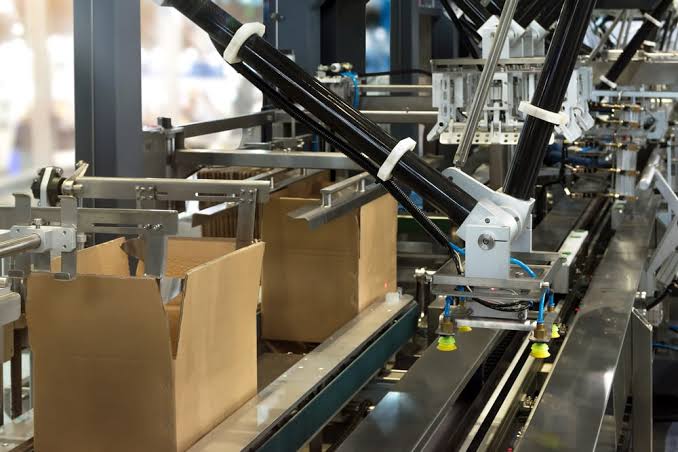In the quest for a sustainable future, finding solutions that can effectively tackle environmental and industrial challenges is more critical than ever. Among the many materials making a significant impact, activated carbon stands out as a versatile and eco-friendly resource. With its unique ability to adsorb impurities, filter out contaminants, and reduce harmful pollutants, activated carbon plays a pivotal role in numerous industries. From water purification to energy storage, it offers solutions that are not only efficient but also environmentally sound.
Activated carbon’s porous structure and large surface area make it an ideal substance for adsorption—a process where molecules adhere to the surface of a material. This powerful mechanism allows activated carbon to trap toxins, chemicals, and other pollutants, making it essential in applications where purity is critical. As industries and governments around the world strive to meet sustainability goals, activated carbon solutions are becoming increasingly important in mitigating environmental impacts.
What Is Activated Carbon?
Activated carbon, often referred to as activated charcoal, is a form of carbon that has been processed to have a highly porous structure. This porous nature is what gives it its extraordinary adsorptive capabilities. Unlike ordinary carbon, activated carbon undergoes treatment at extremely high temperatures, which alters its internal structure to create a network of tiny pores. These pores increase the surface area significantly, allowing it to capture a wide range of substances from gases, liquids, and even the air.
The production process typically involves using natural materials such as wood, coconut shells, or coal, which are then subjected to physical or chemical activation. This transformation results in a material that is both versatile and environmentally friendly, making it a valuable tool in various sustainability-focused applications.
The Role of Activated Carbon in Water Purification
One of the most well-known uses of activated carbon is in water purification. Clean water is a basic human necessity, yet access to it is becoming increasingly challenging due to industrial pollution, agricultural runoff, and climate change. Activated carbon serves as an efficient method to remove contaminants such as chlorine, volatile organic compounds (VOCs), and other harmful substances from water.
Its ability to trap these pollutants on its surface without introducing additional chemicals makes it an environmentally friendly choice for water treatment. Whether in municipal water treatment facilities or home filtration systems, activated carbon ensures that water is safe for consumption and free of harmful impurities.
Air and Gas Treatment
Air quality is another area where activated carbon proves invaluable. As industries emit various gases and chemicals into the atmosphere, the need for air purification becomes more urgent. Activated carbon is widely used in air filters to capture and neutralise volatile organic compounds, odours, and other harmful pollutants.
In industrial settings, it is particularly effective in reducing the emissions of harmful chemicals that contribute to air pollution. Activated carbon filters help industries meet strict environmental regulations by capturing contaminants before they are released into the environment, thus protecting both human health and the planet.
Energy Storage
As the world moves towards renewable energy sources, the need for efficient energy storage solutions is paramount. Activated carbon plays a critical role in energy storage, particularly in the development of supercapacitors. These energy storage devices are known for their ability to charge and discharge rapidly, and activated carbon’s high surface area enhances their capacity.
Supercapacitors that use activated carbon can store significant amounts of energy while maintaining efficiency. This makes them ideal for applications ranging from electric vehicles to renewable energy grids, where quick and reliable energy storage is essential for reducing reliance on fossil fuels.
Activated Carbon in the Food and Beverage Industry
The food and beverage industry also benefits from the unique properties of activated carbon. It is commonly used to purify ingredients, remove impurities, and improve product quality. For instance, activated carbon is employed in sugar refining to remove colourants and contaminants, resulting in a purer product.
Similarly, in the beverage industry, activated carbon is used to filter water and other ingredients, ensuring that the final product meets safety and quality standards. Its ability to adsorb unwanted substances without altering the taste or quality of the product makes it an indispensable tool in this sector.
Supporting the Circular Economy
One of the most compelling aspects of activated carbon is its contribution to the circular economy. After use, activated carbon can often be regenerated, extending its lifecycle and reducing waste. This regeneration process typically involves heating the material to release the adsorbed pollutants, allowing the activated carbon to be reused in various applications.
By supporting the principles of reuse and recycling, activated carbon helps industries reduce their environmental footprint. This aligns with global sustainability goals, as it encourages resource efficiency and minimises the impact of industrial processes on the environment.
Tackling Industrial Waste and Pollution
Activated carbon’s role in tackling industrial waste cannot be overstated. From removing harmful chemicals in wastewater to capturing emissions in industrial smokestacks, it is an indispensable tool in modern pollution control efforts. Many industries, including chemical manufacturing, oil refining and municipal waste incineration rely on activated carbon to ensure their waste products do not harm the environment.
Its ability to handle a wide range of pollutants, including heavy metals, hydrocarbons, and organic compounds, makes activated carbon a versatile and effective solution for reducing the environmental impact of industrial operations.
Pharmaceuticals and Cosmetics
In the pharmaceutical and cosmetics industries, purity is paramount. Activated carbon is widely used to remove impurities from raw materials, ensuring that the final product is safe and effective. In pharmaceutical production, activated carbon helps purify active ingredients and remove unwanted byproducts from chemical reactions.
Similarly, in the cosmetics industry, it is used to filter out contaminants and improve the quality of skincare and beauty products. Activated carbon’s natural origins and ability to adsorb impurities without introducing harmful chemicals make it a preferred choice in these sectors.
Activated Carbon’s Impact on Gold Recovery
Activated carbon also plays a critical role in the gold recovery process. In the mining industry, it is used to extract gold from ores using the CIL (Carbon-in-Leach) and CIP (Carbon-in-Pulp) methods. These processes rely on activated carbon’s ability to adsorb gold particles from cyanide solutions, making it an essential material in the gold mining industry.
This application not only enhances the efficiency of gold extraction but also contributes to more environmentally responsible mining practices, as activated carbon can be regenerated and reused, reducing the need for additional raw materials.
Conclusion
As industries, governments, and individuals increasingly prioritise sustainability, activated carbon emerges as a crucial component of the solution. Its ability to purify water, clean air, support renewable energy storage, and enhance industrial processes makes it an essential material for a greener future. Beyond its immediate applications, activated carbon contributes to long-term environmental goals by promoting resource efficiency and reducing pollution.
In a world where environmental challenges continue to mount, the widespread adoption of activated carbon solutions represents a tangible step towards a cleaner, more sustainable future.






